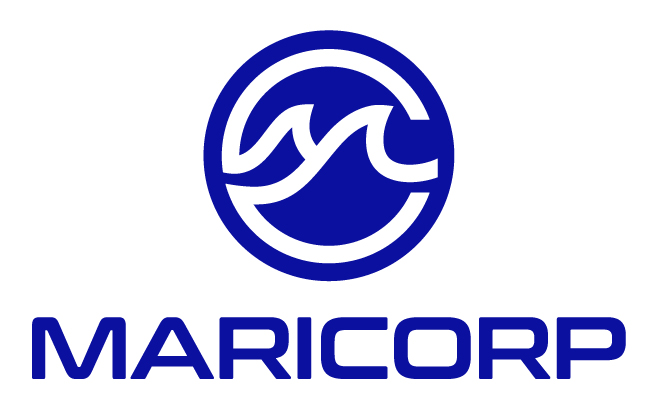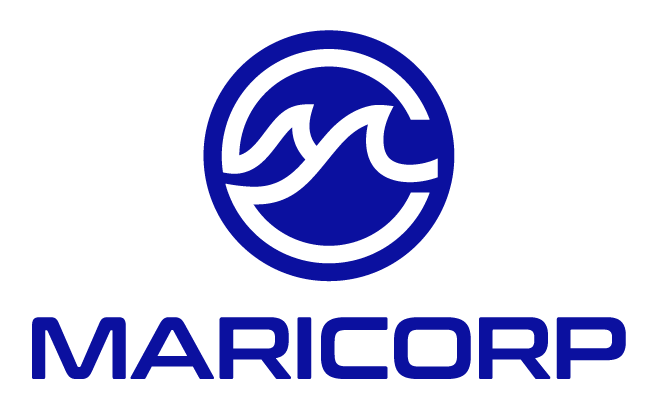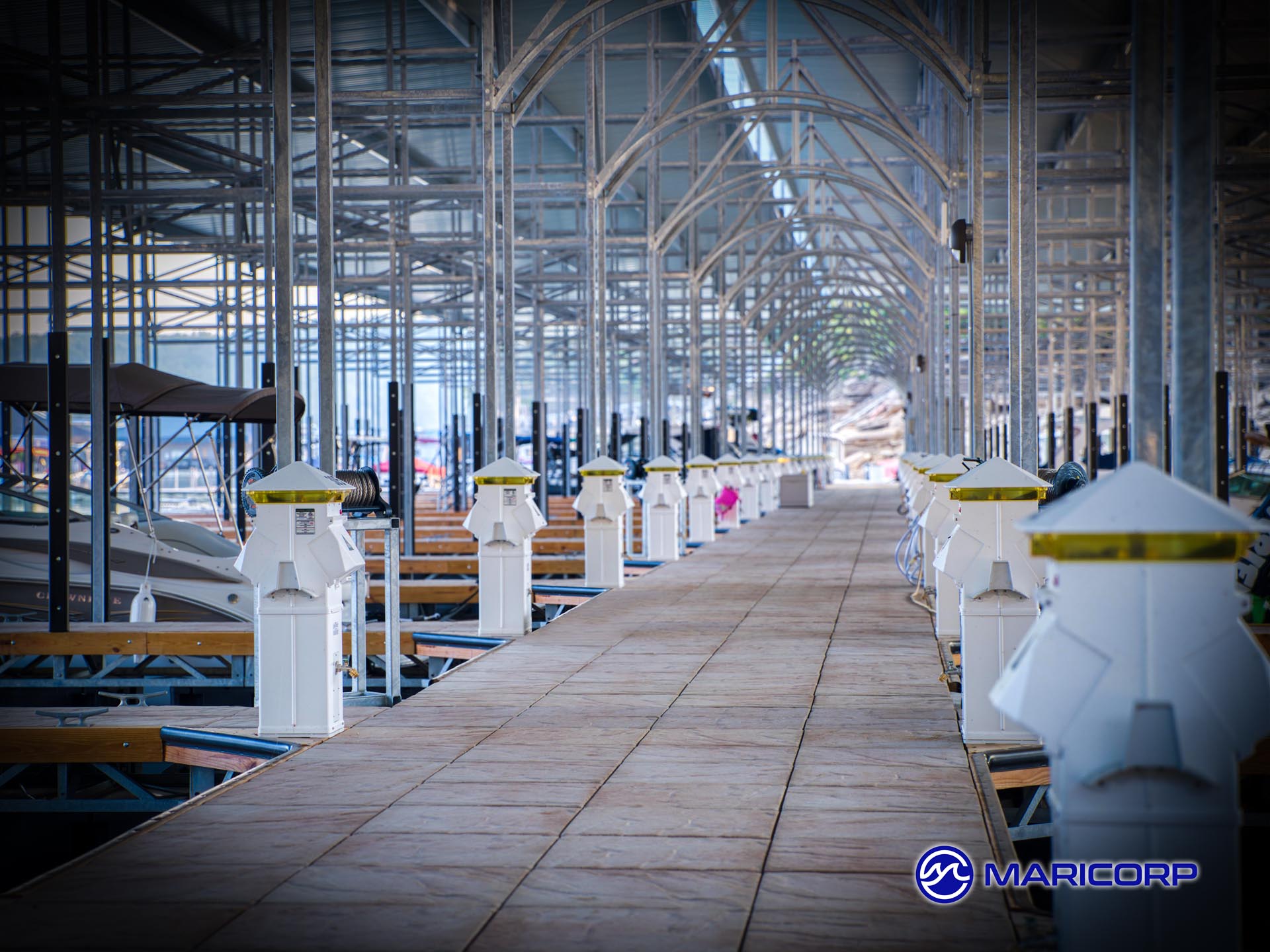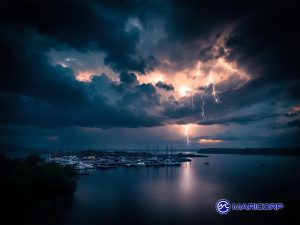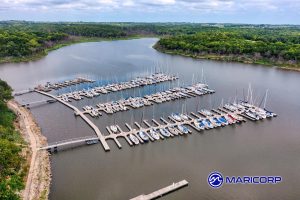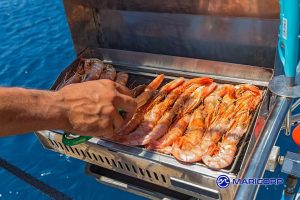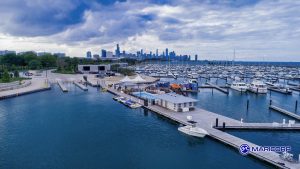5 Essential Fuel Dock Maintenance Strategies and Power Pedestal Servicing Tips
As boating traffic slows in the fall, smart marina operators turn their attention to critical infrastructure—particularly systems that often get overlooked during peak season chaos. Fuel dock maintenance and power pedestal servicing are not only essential for safe operations, but they’re also vital for ensuring your marina infrastructure weathers the off-season and returns in top condition when spring arrives.
From fire prevention to energy efficiency and insurance compliance, now is the time to review and prepare these mission-critical systems.
1. Inspect and Service Fuel Systems for Safety and Compliance
Fall inspections are your first line of defense against leaks, corrosion, and costly downtime. A proper review of your fuel dock should go far beyond a simple once-over of the pump.
Start with these high-priority areas:
- Fuel lines: Look for soft spots, cracking, or bulges in both supply and return lines. Replace anything suspect.
- Dispensers and nozzles: Test automatic shut-offs and pressure consistency. Ensure the breakaway couplings reset correctly.
- Tanks: Conduct a full inspection of both above-ground and underground tanks, checking for signs of rust, settlement, or abnormal wear.
If you’re storing fuel over the winter, perform quality testing. Check for water contamination and microbial activity, which can cause “diesel bug” sludge buildup. If signs are present, treat with biocide additives before fuel degradation affects spring performance.
Also evaluate fire extinguisher stations and signage. Extinguishers should be marine-rated, easily accessible, and have a current inspection tag. Fueling areas must include clearly visible “No Smoking” and emergency shut-off signage in accordance with NFPA marina code guidelines.
2. Drain and Winterize Fuel Lines and Dispensers
Once inspections are complete, begin winterization of your fueling systems—especially in colder regions where freezing poses a threat.
Effective winterization includes:
- Draining lines of all liquid fuel and moisture using compressed air or vacuum systems.
- Applying fuel stabilizers to any remaining fuel to prevent oxidation and phase separation.
- Removing or sealing nozzles and placing shrink wrap or custom covers over exposed parts.
- Labeling active tanks for contents and treatment dates to avoid confusion in the spring.
In northern climates, disconnect and store above-ground dispensers indoors if they’re not designed to withstand freezing. In milder regions, wrapping exposed pipes and dispensers with thermal insulation may be enough.
Don’t forget to file seasonal service change notices with your fuel vendor, and update internal SOPs to reflect system status.
3. Clean, Repair, and Service Power Pedestals
While less visible than fuel infrastructure, power pedestals pose equal safety risks if left unchecked. Salt spray, moisture, overuse, and improperly rated cords all take a toll on electrical hardware.
Your fall power pedestal servicing checklist should include:
- Function testing of all GFCI outlets, breakers, and main switches.
- Inspection of receptacles and plug heads for heat damage, arcing signs, or corrosion.
- Application of dielectric grease on connectors and wire terminals to resist corrosion.
- Verification of pedestal gaskets and seals, replacing any that are cracked or loose.
Overheating is a common hazard; look for signs of melted plugs or discolored receptacles—usually caused by undersized shore power cords or reversed polarity from improperly wired vessels. Remove damaged pedestals from service immediately and repair before reactivation.
Also check for ventilation blockages in pedestal bases. Many units rely on passive airflow to reduce condensation. If moisture is trapped inside, internal rust or shorting may follow.
Use this time to log any recurring issues. If certain slips have constant complaints of power loss, inconsistent charging, or “hot cords,” that could point to aging circuitry or under-capacity breakers.
4. Document Conditions for Insurance and Liability Protection
Don’t rely on memory—or luck—if a storm hits this winter. Thorough documentation helps prove damage wasn’t pre-existing and can expedite any necessary claims.
Here’s what to record:
- Photographs of each fuel dispenser, pedestal, tank hatch, and utility panel.
- Serial numbers, service stickers, and connection details for each station.
- Under-dock cable runs, junction boxes, and pipe supports, especially in older marinas with retrofitted systems.
Create a digital record in your marina management platform or cloud storage system. Tools like Google Drive, Dropbox, or marina-specific CRMs (e.g., Scribble, Harbour Assist, or Dockwa) are all excellent places to store high-res photos and checklists.
Also review your current insurance policy to confirm you’re covered for electrical faults and environmental liability related to fuel leaks. If not, fall is the time to update your policy—not after something goes wrong.
5. Train Staff and Standardize Off-Season Procedures
Preventative maintenance fails without proper communication. Train your team on winter shutdown procedures and provide checklists they can follow next year—or even mid-winter if necessary.
Include:
- Hardcopy and digital maintenance logs stored in the same location.
- Emergency protocols for fuel spills or electrical faults.
- Contact list of vendors, electricians, and environmental response teams.
- Instructions for isolating circuits or shutting off fuel supply valves in case of emergency.
If you operate year-round, post signs at the fuel dock and electrical pedestals that highlight limited seasonal access or caution boaters to check their cords and connections before plugging in.
To further protect your marina over the winter:
- Install camera surveillance at critical infrastructure points.
- Use lockouts or signage to keep non-staff from activating offline systems.
- Log weather-related inspections, especially after storms or deep freezes.
Bonus Tips for Cold-Weather Protection and Upgrades
While focusing on fuel dock maintenance and power pedestal servicing, you can further winterize your infrastructure with these add-ons:
- Inspect electrical bonding systems to verify continuity and reduce stray current risks.
- Anchor cleats and bollards on fuel docks to prevent shifting from ice flows or high winds.
- Apply anti-seize compound to screws, access panel latches, and grounding bolts.
- Install removable pedestal base covers to protect conduit from freezing moisture intrusion.
- Place rodent deterrents (non-toxic sachets or electric emitters) near cabinets or junction boxes to keep nesting critters out.
- Check fire suppression proximity to fueling systems and note any obstructed access.
If your marina’s power infrastructure is due for a refresh, consider budgeting now for smart pedestal upgrades that allow for remote shutdowns, real-time monitoring, and integrated billing—key features supported by Falco’s connected systems.
A Proactive Season Sets the Stage for a Smooth Spring
Fuel dock maintenance and power pedestal servicing might not be the most glamorous fall tasks, but they’re among the most impactful. A few days of concentrated attention this season can prevent equipment failure, environmental penalties, and emergency calls next spring.
Prepare your infrastructure now—and you’ll start next season ahead of the game, with safer systems, lower repair costs, and happier slip holders.
Related Maintenance Articles
No links yet.
Other Articles:
Additional resources and reading:
*Sign up for our free newsletter “Marina Management Journal” so you can stay up to date
About MariCorp
Maricorp is one of the largest floating boat dock manufacturing and construction companies in the United States, specializing in galvanized steel floating docks and boat lift systems. With projects spanning coast-to-coast, Maricorp provides marina consultation and design, marine construction, marina repair and renovation, and boat dock disaster response and demolition.
